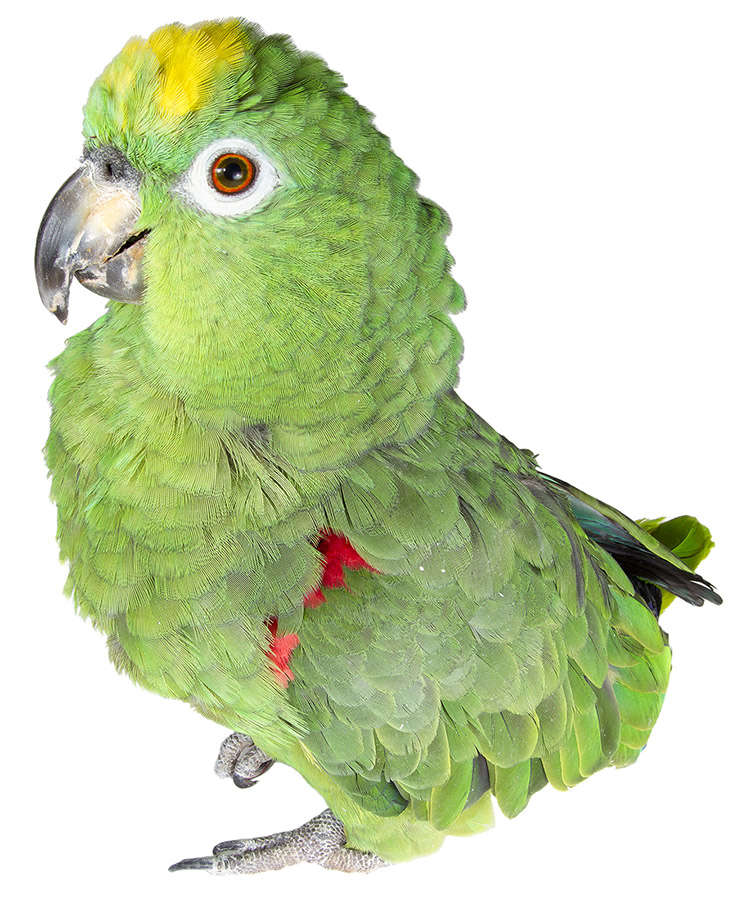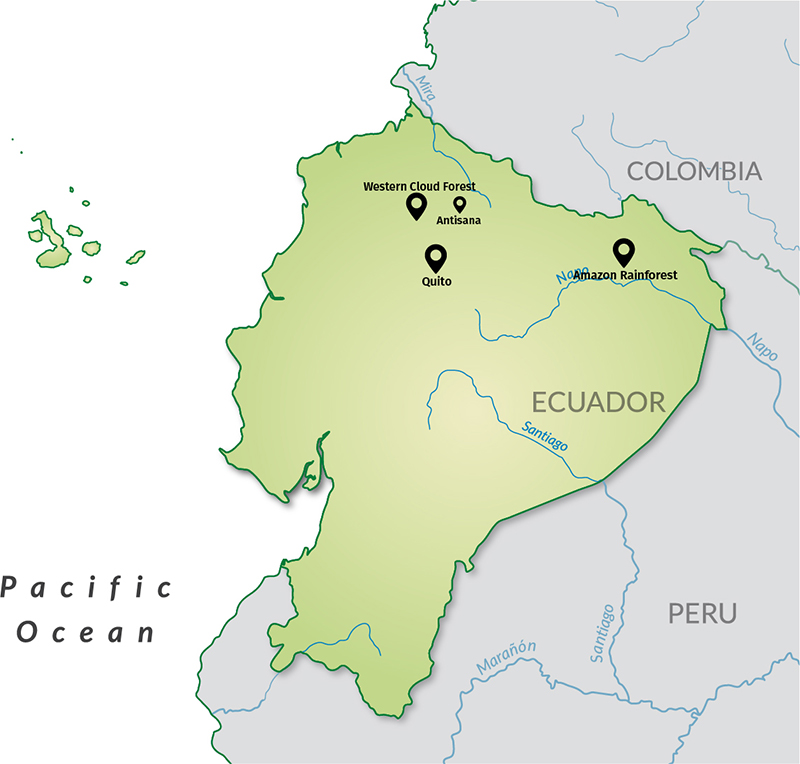About the Photo Tour
For ten days we will travel along the rich ecosystems that Ecuador has within a relatively small territory, which provides the facility to observe and photograph a great diversity of birds throughout the year.
It’s time to get the most out of the natural wealth of these ecosystems through your photos because, throughout this birds of Ecuador photo tour, we want you to vibrate every second while discovering the world of birds.

Date
10 -21 Marzo 2020
Activity level
Moderado
Available spaces
Moderado
About the route
Daniel Mideros
Born in Ecuador. Professional photographer graduated in Advertising Communication and Marketing at the Universidad San Francisco de Quito. From an early age he showed a fascination with nature, photography and outdoor activities.
In his professional life he has dedicated himself mainly to the field of ecotourism, linked to visual communication and sustainability. This has led him to tour majestic places and feel unique experiences; all this emotional, experiential energy prompted him to undertake his own project with the desire to share these places and adventures with more people.
Javier Zurita
Born in Ecuador, Javier graduated from Tourism and Conservation at the Technical Equinoctial University of Quito (UTE). He is a nature photographer, specialized in birds and high speed.
He currently works as an expert photographer guide, in addition to the adaptation of bird feeders and the development of photographic hiding places, commonly called “hide”.

Early in the morning we will embark on our trip to the high cloud forest area.
We will make our first stop in the parish of Nono, where we will seek, within a hide, to photograph the emblematic tororoi birds or ampitas, among which are the Chestnut-naped Antpitta (Grallaria nuchalis), Chestnut-crowned Antpitta (Grallaria ruficapilla) and Rufous Antpitta (Grallaria rufula); Then we will look to take pictures of the air dancers, the hummingbirds, among which we have: Buff-winged Starfrontlet (Coeligena lutetiae), Black-tailed Trainbearer (Lesbia victoriae), Sapphire-vented Puffleg (Eriocnemis luciani), Great Sapphirewing (Pterophanes cyanopterus), Collared Inca (Coeligena torquata), and the famous Sword-billed Hummingbird (Ensifera ensifera).
In the morning we will go to a hiding place or “hide”, where we will look to make images of the Masked Trogon (Trogon personatus), Plate-billed Mountain Toucan (Andigena laminirostris), Masked Flowerpiercer (Diglossa cyanea), several species of tanagers such as the Golden Tanager (Tangara arthus), Flame-faced Tanager (Tangara parzudakii), Black-capped Tanager (Tangara heinei), Blue-winged Mountain Tanager (Anisognatus somptuosus), Sickle-winged Guan (Chamaepetes goudtii), and other bird species.
In the afternoon, we will take high-speed photography; On this site you can find the Violet-tailed Sylph (Aglaiocercus coelestis), Booted racket-tail (Ocreatus underwoodii), Gorgeted Sunangel (Heliangelus strophianus), Empress Brillant (Heliodoxa imperatrix), among others.
After breakfast we will go to a transition zone between the Cloud Forest with the biodiverse Chocó Forest (1,700 to 750 meters above sea level), where we will look for birds such as the Glistening-greed Tanager (Chlorochrysa phoenicotis), Black-chinned Mountain Tanager (Anisognathus notabilis), Golden-naped Tanager (Tangara ruficervix), Moss-back Tanager (Bangsia edwardsi), Rufous-throated Tanager (Tangara rufigula), Orange-bellied Euphonia (Euphonia xanthogaster), among others.
If luck accompanies us, we will see other bird species such as the Orange-breasted Fruiteater (Pipreola jucunda), and the Toucan Barbet (Semnornis ramphastinus) that usually arrive.
Today, our objective is one of the most emblematic birds of the Cloud Forest, the Cock of the Rock (Rupicola peruviana). The males are concentrated in places called Lek, where, in a duel of songs and dances, they court the females who will choose the highest bidder as their reproductive partner.
NOTE: For this event it is very important to have patience and stealth, since we will be very close to the Lek, a sensitive place. Respect for these animals will be our priority.
After this show, we will see amazing birds that leave the forest to feed, among which are the Chestnut-crowned Antpitta (Grallaria ruficapilla), Giant Antpitta (Grallaria gigantea), Moustached Antpitta (Grallaria alleni), Dark-backed Wood Quail (Odontophorus melanonotus), among others.
In the afternoon, we will do high speed photography.
After breakfast, we will go to another place where we will take our last photographs of the Cloud Forest and its beautiful species, we will be able to observe the Pale-mandibled Aracari (Pteroglossus erythropygius), Green Honeycreeper (Chlorophanes spiza), Roufus-throated Tanagerb (Tangara rufigula), and if we are lucky the Chestnut-mandibled Toucan (Ramphastos swainsonni), Chocó Tucán (Ramphastos brevis) and Club-winged Manakin (Machaeropterus deliciosus).
Once this event is finished we will undertake our trip to the capital of the country, Quito.
We start the day from Quito to the Antisana Ecological Reserve.
Already in the heart of the park, our objective will be to photograph the Carunculated Caracara (Phalcoboenus carunculatus), nice raptors with colorful faces and mottled vest. Also the Bandurrias or Black-faced Ibis (Theristicus melanopis), very long-beaked birds that, unlike Caracara, are not as friendly to humans.
In this area is the Giant Hummingbird (Patagona gigas), the largest in the world! Also the Black-tailed Trainbearer (Lesbia victoriae), Sparkling Violetear (Colibrí coruscans), among others.
If we are lucky, we can see the Andean Condor (Vultur gryphus) flying over the valleys.
Once this event is finished we will come back to the capital city, Quito.
We will leave early in the morning from Quito in the direction of the city of Coca (option of land transport or plane).
In the city of Coca we will embark on comfortable canoes covered with roof. We will sail around two and a half hours, enjoying a snack, delighting in the beautiful view of the Napo river basin, we will have sporadic sightings of animals. In port, visitors are cordially welcome with a refreshing drink and are then led to the comfort of their cabins.
After a rest, we will go by boat sailing along the beaches of the river in search of birds that are usually hanging around its banks.
With the sun waking up over the horizon we will prepare to go to the first observation tower. The platform is at a height of 36 m and was built to the highest standards of quality and safety, it is regularly inspected by its builders. Once in the heights, we will have the opportunity to enjoy a beautiful Amazonian landscape and observe flocks of colorful tanagers, macaws, toucans, and other species of birds and fauna.
Then we will go to the parrot and macaw clay lick; a place where our cameras will witness one of the most beautiful and colorful natural spectacles in the Amazon. In silence and with patience we will wait for dozens of parrots of different species to come down to eat the mineralized clay.
In these strategic sites you can see around 11 species of parrots and parakeets, and in certain seasons even scarlet macaws. The visit – of course – depends on weather conditions, although it is usually successful.
After breakfast we will go to another observation tower, which is located at a height of 45 m above the canopy of the glass of an imposing Ceibo tree. On this site you can see other types of birds that often perch on branches near the tree.
After this event we will seek to photograph one of the most emblematic birds of the Amazon, the Wire-tailed Manakin (Pipra filicauda), if we are lucky we will be able to see it.
On our return we will paddle through a lagoon in search of Oatzin, herons and other semi-aquatic birds.
We will leave the hotel early to navigate the Napo River towards the city of Coca. On the return trip, there is the possibility of bird sightings that are usually perched along the river.
Upon arrival at the port, we will take our transfer / plane to return to Quito.
We will experience three types of climates.
In the first part of the trip, in the cloud forest region, we will have a mild climate and sometimes cold nights.
On the second route, in the Antisana Ecological Reserve, located in the Andean region that is above 3000 m.a.s.l. there will be cold currents, so it is important to wear warm and waterproof clothing.
For our last destination, the Amazon region of hot and humid weather, we recommend bringing long pants, shirts or long-sleeved shirts and a lightweight material that help perspire less and avoid mosquitoes that can be quite annoying, since the region is between 100 and 800 meters above sea level.
For a better experience, it is important to know a couple of factors which will facilitate your stay in Ecuador:
If you’d like to take home a couple of souvenirs, we recommend bringing a little extra cash in order to acquire these at the different locations we will be staying at (Ecuador’s currency is the US dollar). Most places only take cash. We recommend bringing small bills or coins, as most places do not accepts bills larger than $20.
The tropical regions have a lot of mosquitos, so bringing mosquito repellent is very important.
Sunblock.
Hats.
Flashlight (a headlamp is preferable).
Bags to store wet clothes.
Water bottle.
As photographers, we know how difficult it is to decide how much equipment to take on trips, as we always want to take all of our equipment with us so that we can take advantage of our experiences. Here is a list of equipment we recommend bringing:
- Wide angle lens
- Zoom lens, range 100-600
- Equipment protector for the rain
- Tripod
- Flash
- Difusors
- Trigger
- Batteries
- Battery chargers
- Cleaning equipment
- Plug adaptor
Accommodation.
All tour meals.
Expert photographer guide.
Quito – Coca – Quito air ticket/Transfers (depends on the choice).
Boat.
Reserve fees.
International air tickets and airport taxes.
Additional nights.
Quito Hotel.
Alcoholic beverages, snacks and drinks that are not part of the meals.
Laundry service.
Personal expenses.
Tips.
Any other service not specified in the document.
Featured sightings

Birds

